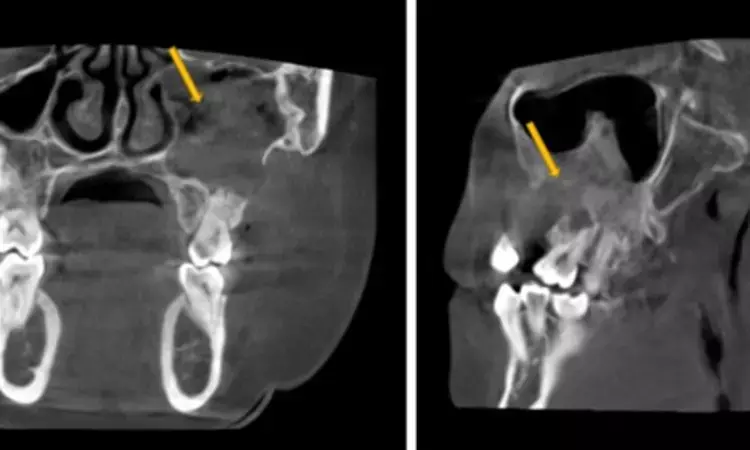- Home
- Medical news & Guidelines
- Anesthesiology
- Cardiology and CTVS
- Critical Care
- Dentistry
- Dermatology
- Diabetes and Endocrinology
- ENT
- Gastroenterology
- Medicine
- Nephrology
- Neurology
- Obstretics-Gynaecology
- Oncology
- Ophthalmology
- Orthopaedics
- Pediatrics-Neonatology
- Psychiatry
- Pulmonology
- Radiology
- Surgery
- Urology
- Laboratory Medicine
- Diet
- Nursing
- Paramedical
- Physiotherapy
- Health news
- Fact Check
- Bone Health Fact Check
- Brain Health Fact Check
- Cancer Related Fact Check
- Child Care Fact Check
- Dental and oral health fact check
- Diabetes and metabolic health fact check
- Diet and Nutrition Fact Check
- Eye and ENT Care Fact Check
- Fitness fact check
- Gut health fact check
- Heart health fact check
- Kidney health fact check
- Medical education fact check
- Men's health fact check
- Respiratory fact check
- Skin and hair care fact check
- Vaccine and Immunization fact check
- Women's health fact check
- AYUSH
- State News
- Andaman and Nicobar Islands
- Andhra Pradesh
- Arunachal Pradesh
- Assam
- Bihar
- Chandigarh
- Chattisgarh
- Dadra and Nagar Haveli
- Daman and Diu
- Delhi
- Goa
- Gujarat
- Haryana
- Himachal Pradesh
- Jammu & Kashmir
- Jharkhand
- Karnataka
- Kerala
- Ladakh
- Lakshadweep
- Madhya Pradesh
- Maharashtra
- Manipur
- Meghalaya
- Mizoram
- Nagaland
- Odisha
- Puducherry
- Punjab
- Rajasthan
- Sikkim
- Tamil Nadu
- Telangana
- Tripura
- Uttar Pradesh
- Uttrakhand
- West Bengal
- Medical Education
- Industry
Compared to panoramic radiography, CT/CBCT has significantly higher sensitivity for detecting maxillary sinusopathies

Compared to panoramic radiography, CT/CBCT has significantly higher sensitivity for detecting maxillary sinusopathies suggests a new study published in the Dentomaxillofacial Radiology.
A systematic review was performed to evaluate the performance of panoramic radiography (PR) vs CT or cone beam CT (CBCT) in the diagnosis of pathological maxillary sinuses.
Observational studies that compared PR with CT/CBCT were used to evaluate pathological changes in the maxillary sinuses. A complete search of seven primary databases and gray literature was carried out. The risk of bias was assessed according to the Newcastle-Ottawa tool, and the GRADE tool was used to assess the quality of evidence. A binary meta-analysis was performed to assess the effectiveness of evaluating pathological alterations in the maxillary sinuses in PR and CT/CBCT.
Results:
Seven studies were included in our study, out of which four were included in a quantitative analysis. All studies were classified as low risk of bias. Five studies compared PR with CBCT and two studies compared PR to CT. The most common pathological alteration in maxillary sinuses reported was mucosal thickening. CT/CBCT was seen to be the most effective method for assessing pathological changes in the maxillary sinus when compared to PR (RR = 0.19, 95% confidence interval [CI] = 0.05 to 0.70, p = 0.01).
CT/CBCT are the most appropriate imaging methods to evaluate pathological changes in the maxillary sinuses, while PR is still limited in the evaluation of these changes being considered only for initial diagnosis.
Reference:
Performance of panoramic radiography compared with computed tomography in the evaluation of pathological changes in the maxillary sinuses: a systematic review and meta-analysis. Amanda Regina Fischborn, Jéssica Daniela Andreis, Leticia Maíra Wambier, Caique Mariano Pedroso, Marcela Claudino, and Gilson Cesar Nobre Franco
Dentomaxillofacial Radiology 2023 52:5
Keywords:
Compared, panoramic, radiography, CT/CBCt, significantly, higher, sensitivity, detecting, maxillary, sinusopathies, Dentomaxillofacial Radiology, Amanda Regina Fischborn, Jéssica Daniela Andreis, Leticia Maíra Wambier, Caique Mariano Pedroso, Marcela Claudino, and Gilson Cesar Nobre Franco
Dr. Shravani Dali has completed her BDS from Pravara institute of medical sciences, loni. Following which she extensively worked in the healthcare sector for 2+ years. She has been actively involved in writing blogs in field of health and wellness. Currently she is pursuing her Masters of public health-health administration from Tata institute of social sciences. She can be contacted at editorial@medicaldialogues.in.
Dr Kamal Kant Kohli-MBBS, DTCD- a chest specialist with more than 30 years of practice and a flair for writing clinical articles, Dr Kamal Kant Kohli joined Medical Dialogues as a Chief Editor of Medical News. Besides writing articles, as an editor, he proofreads and verifies all the medical content published on Medical Dialogues including those coming from journals, studies,medical conferences,guidelines etc. Email: drkohli@medicaldialogues.in. Contact no. 011-43720751


